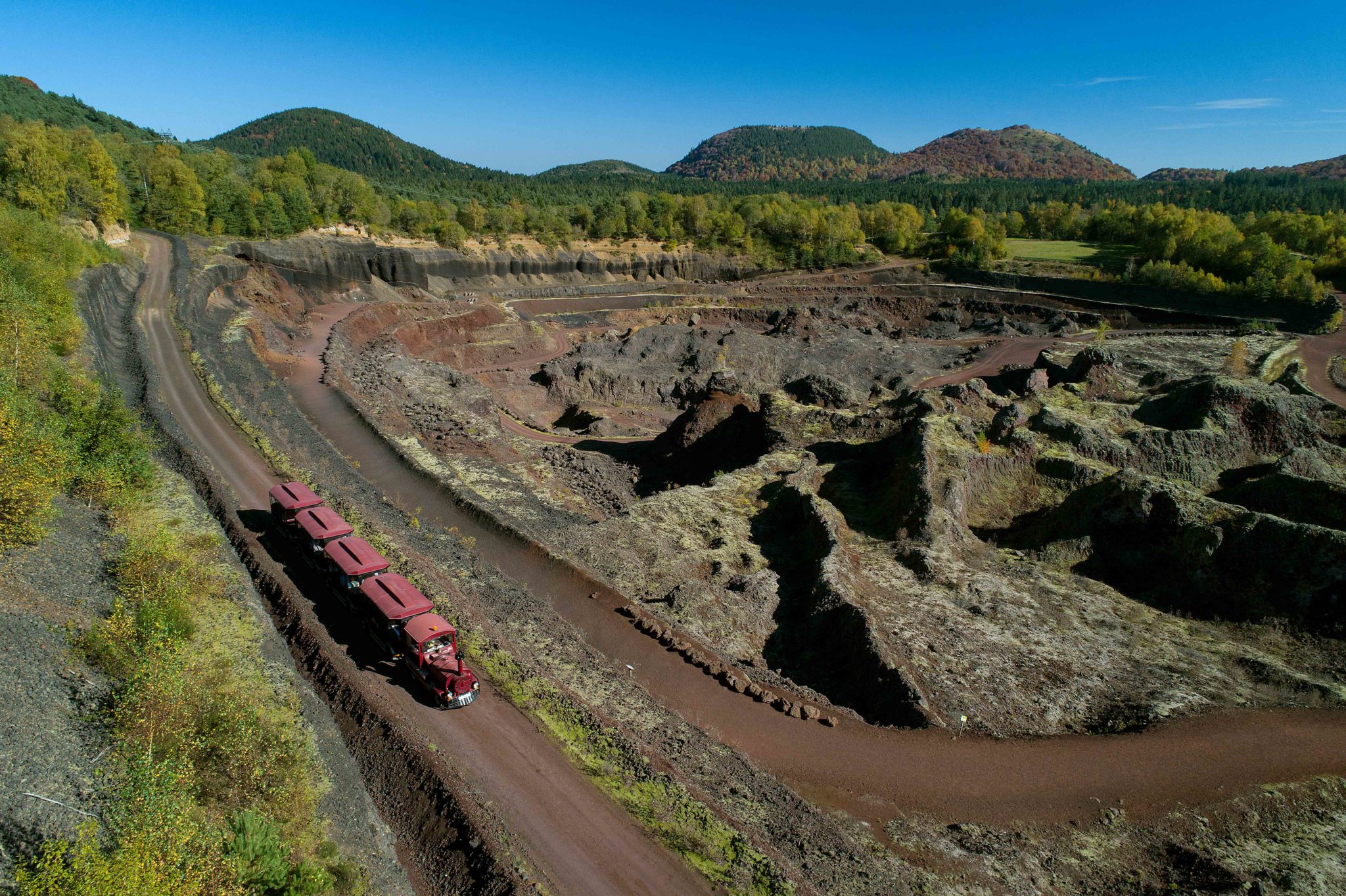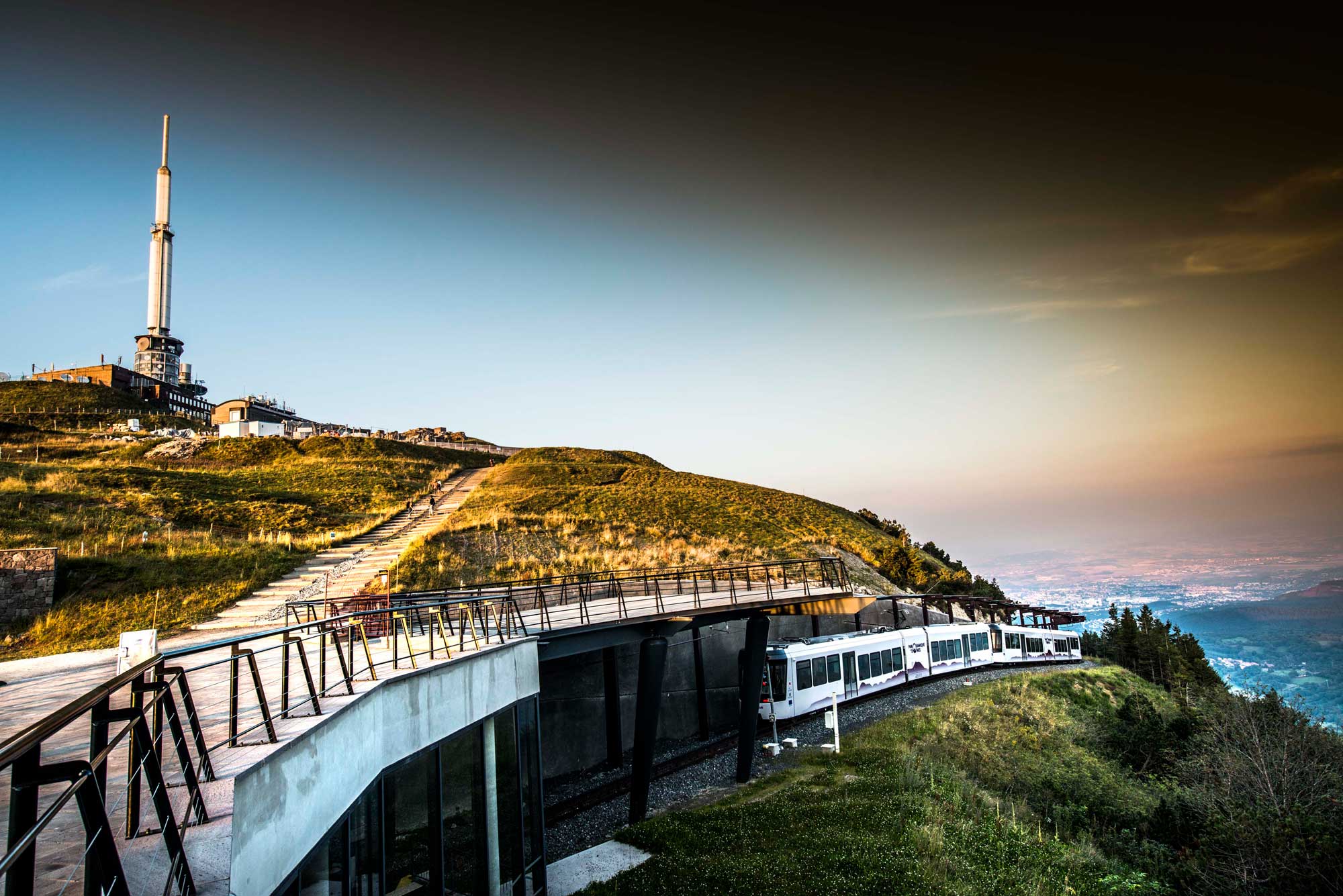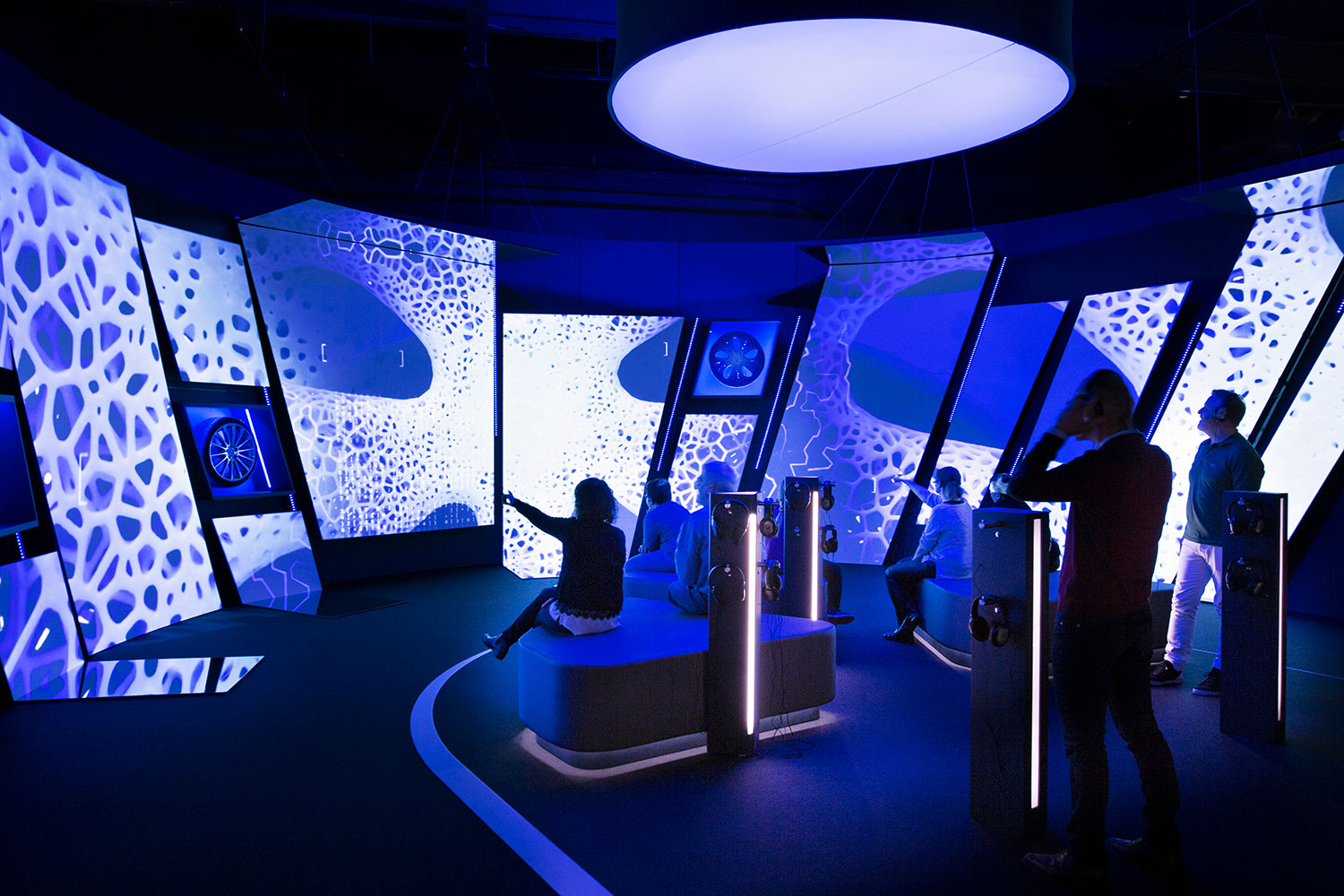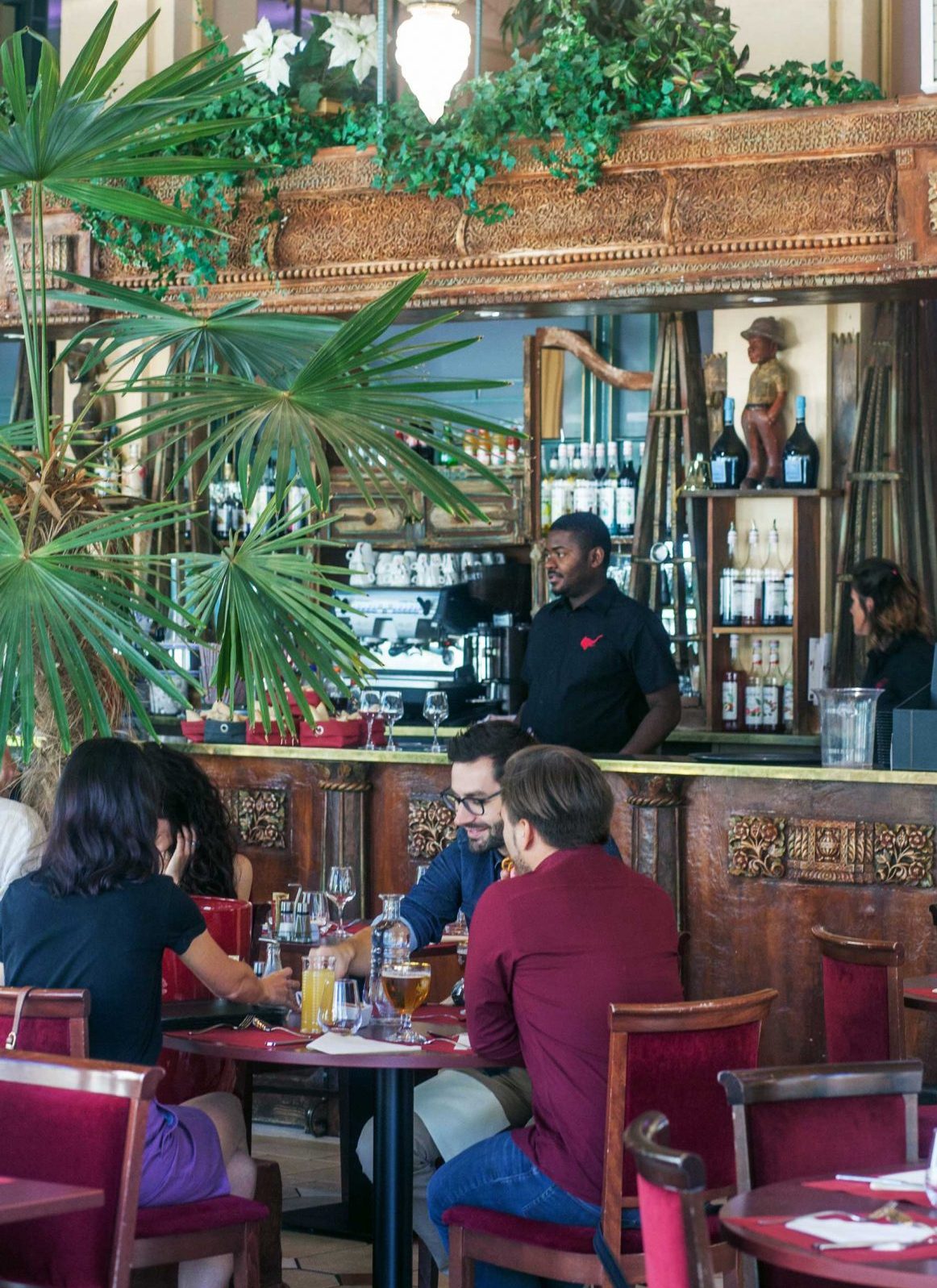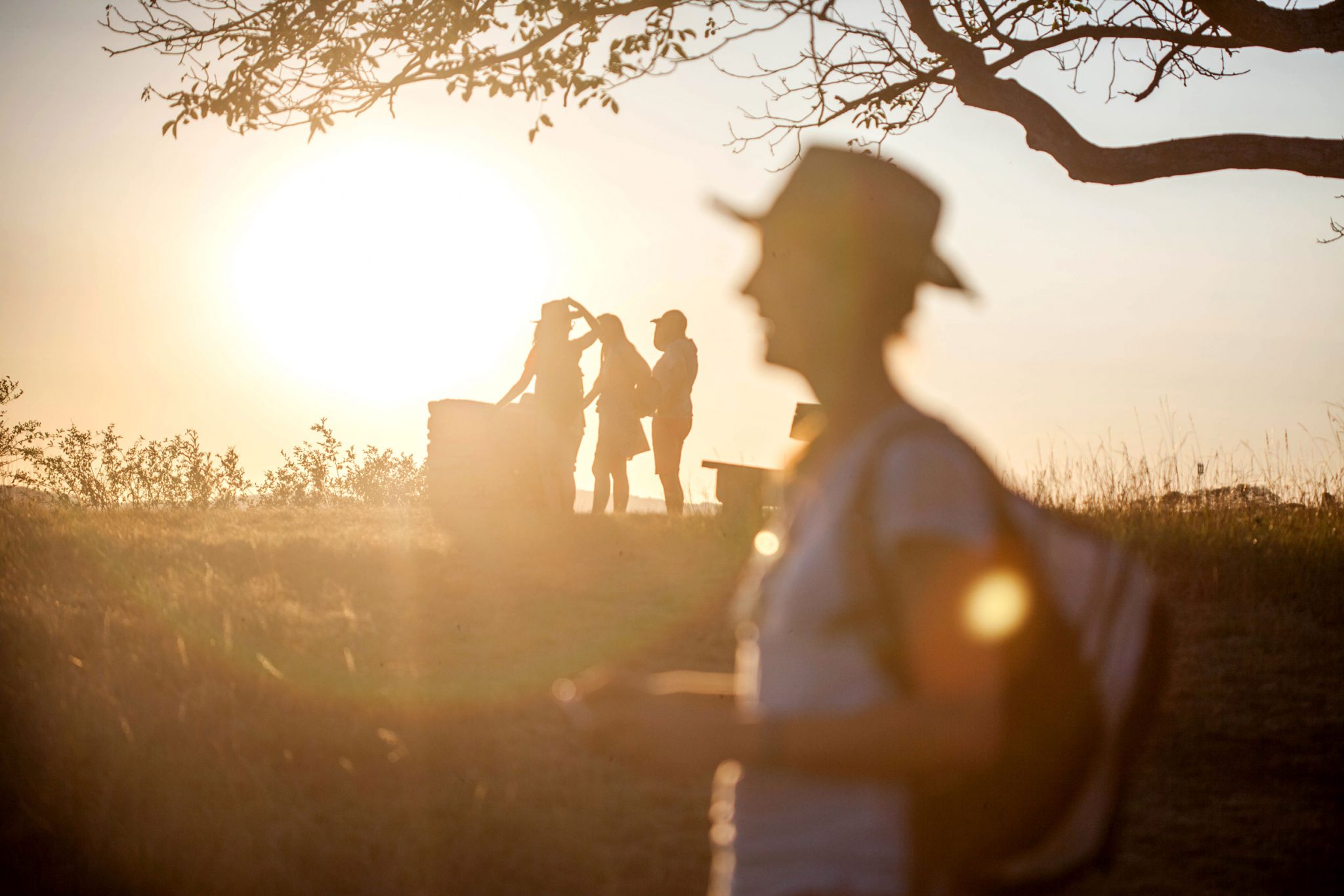Châtel-Guyon, a beautiful and blossoming spa town
A town of two faces
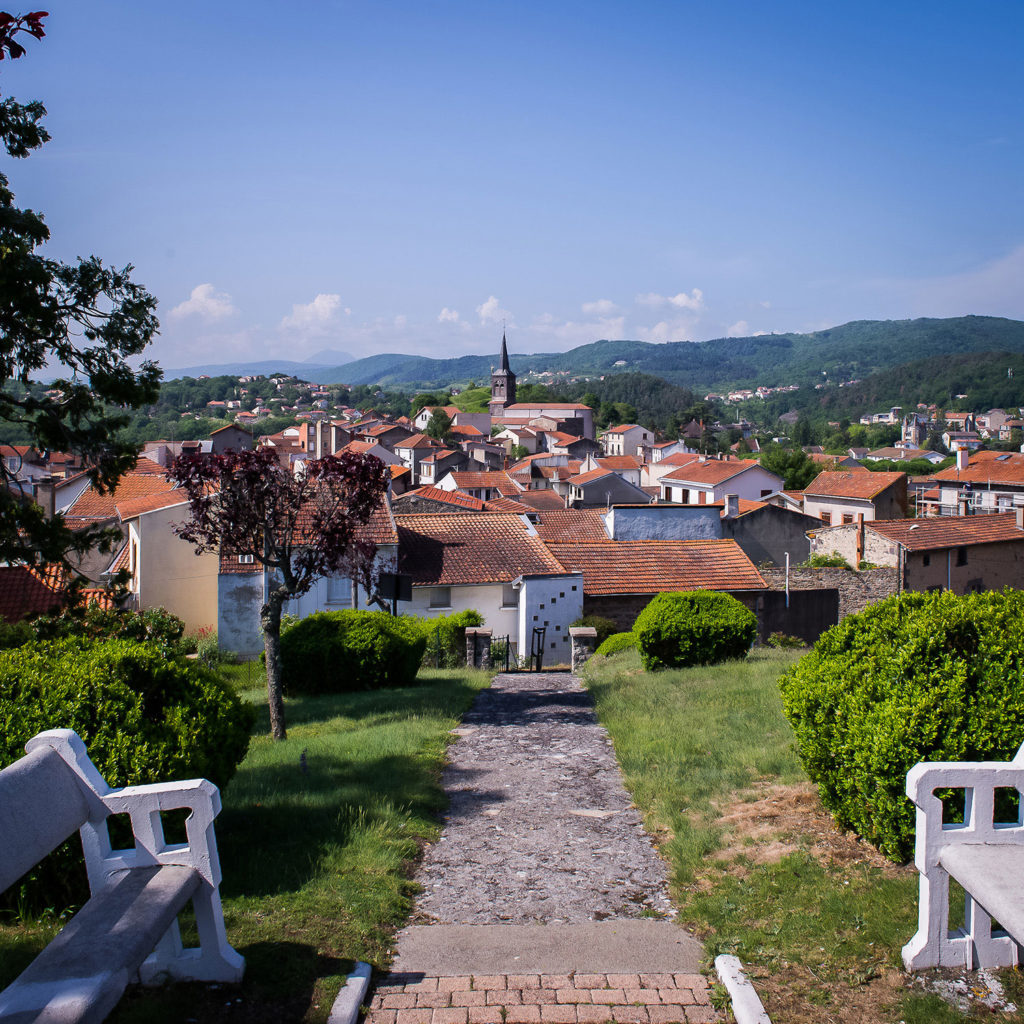
Nestling in verdant, forested surroundings at the heart of the Volcans d’Auvergne Regional Nature Park, the town of Châtel-Guyon serves up the perfect combination of wellbeing, sport and nature. This tourist resort and spa town has harnessed the elements air, water and fire, wrapping them up in a destination brimming with charm and character.
Since its origins, Châtel-Guyon has always been very different to the other spa towns of Auvergne. It didn’t grow up around thermal springs during the Gallo-Roman period, developing instead around a hilltop Calvary, where peasant farmers congregated for protection and to live out their lives growing grapes and making wine.
Indeed, the name Châtel-Guyon is derived from the history of this hilltop Calvary. It was here that Guy II, Count of Auvergne, built his castle. He called it Castrum Guidonis (the Castle of Guy), and this name evolved first into Castel Guidonem and later Châtel-Guyon.
But you won’t find the remains of the castle anywhere. It was dismantled by order of Riom in 1595, following a quarrel between the count and his brother and the confiscation of the estate by the king of France.
AND THEN CAME THE WATERS…
So it was that Châtel-Guyon grew up around this unique focal point, followed later by an expansion prompted by the discovery of the properties of the thermal waters there. Today, visitors find a little town with two distinct characters, quite unlike any other. It’s a combination of rural village and tourist resort, a blend of architectural styles, with grand 1900s façades rubbing shoulders with old winemakers’ cottages.
On the one hand there is the historical centre, a village of steep streets and tall traditional Brayaud ‘block’ dwellings, built to meet the demands of the winemakers who lived in them (with the storage and maturing cellar having pride of place at the bottom). Some of these houses still sport their ‘galetas’, overhanging timber drying attics under the eaves, originally for drying garlic, onions and the like.
On the other hand there is the main town, the thermal spa resort, where Baroque hotels line broad avenues. Here, the spa, the elegant casino and eccentric-looking villas confidently showcase their grand architecture. When exploring this part of town, look up to see the graceful cast-iron balustrades, remarkable ceramic decorations and hotels that look as if they’re straight out of a film set.

A TOWN THAT’S GOING PLACES
2020 marks a decisive turning point for the town of Châtel-Guyon. The town centre has been completely redesigned and revamped, filling the urban layout with green spaces and light. Motor traffic has been re-routed, parking places removed, new fountains and terraces built and a new ‘greenway’ and landscaped gardens now have pride of place in the Parc Thermal. These alterations have changed the face of Châtel-Guyon completely, along with the brand new Aïga resort, set to open its doors in the spring. Châtel-Guyon is a spa resort unlike any other in Europe, part of the local project to turn this spa town into a ‘Station Thermale de Pleine Santé’.
STAGE TOWN ON THE 2020 TOUR DE FRANCE
On 11 September 2020, Châtel-Guyon will have the honour of hosting the start of the 13th stage of the 2020 Tour de France. And this is not just any stage! Nicknamed the ‘Volcanoes Stage’, it will pass exclusively through Auvergne, starting in Châtel-Guyon and climbing the Col de Neronne on the way to Puy Mary. In all, the stage runs for 191 km, racking up the biggest total ascent on this year’s Tour.
For Châtel-Guyon, which has long embraced sport and cycling, becoming a stage town on Le Tour is a source of immense pride. To celebrate the day, the town is preparing a huge family-friendly celebration. Watch this space…

EXPLORING THE TOWN’S HISTORY AND HERITAGE
During the Roaring Twenties, Châtel-Guyon was a much sought-after spa destination. Sultans, Arab kings, African nobility and Indian maharajahs all frequented the resort. In 1886, Guy de Maupassant came to stay in Châtel-Guyon, setting his novel Mont Oriol here.
THE PARC THERMAL
Louise, Suzanne, Yvonne, Marguerite… These are the names of the thermal springs here. If you’re wondering why, it’s because they were named after the wives and daughters of the landowners who sold the springs to the municipality. Follow your nose around this splendid spa park and you’ll come across them, each one featuring a different decorative surround.
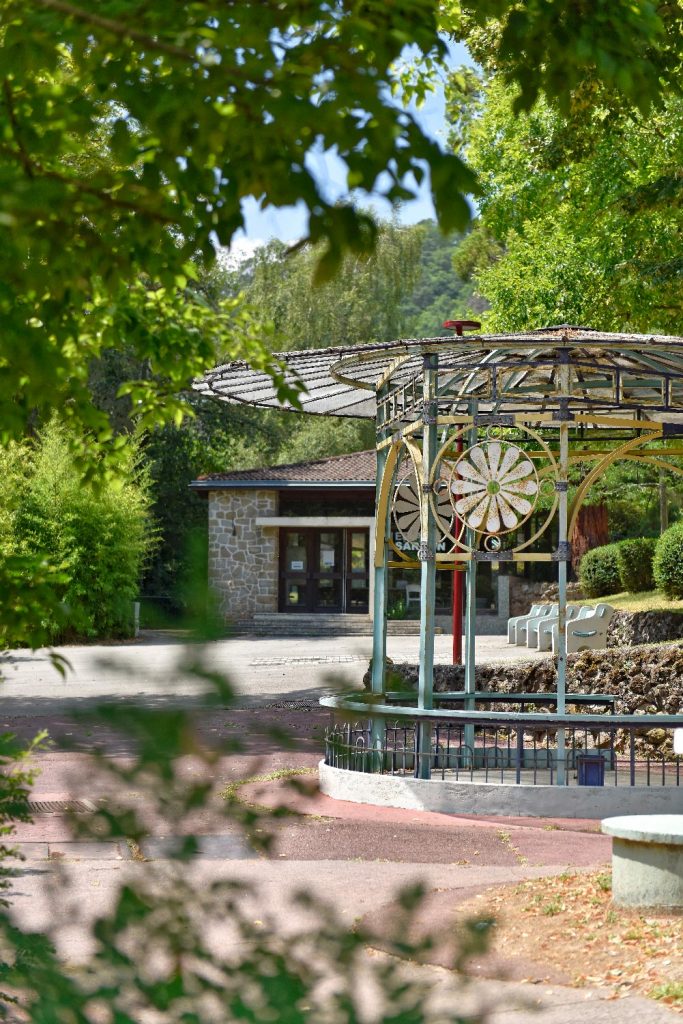
LES GRANDS THERMES : SYMBOL OF THE SPA RESORT’S PROSPERITY
For any spa town, the architecture of the town’s spa building is an important consideration. In the 19th century, the spa in Châtel-Guyon was transformed into a monumental edifice designed to represent the whole town.
Both the interior and exterior are a wonderful blend of architectural designs from Antiquity with the local style.

SAINT-COUST PRIORY
History buffs and ramblers will make a beeline for Saint-Coust Priory, a Cluniac site at La Rochette, just south of the village of Les Grosliers.
The heritage and environment association ADEP, whose mission is to showcase and promote interest in natural attractions, is on hand to help you explore Châtel-Guyon and the surrounding area.
More information can be found on the ADEP website (in French only).
AN ARCHITECTURAL HOTCHPOTCH
Cast-iron gateways featuring undulating designs, red-brick buildings standing side by side with Volvic stone, timber balustrades… the villas and hotels of Châtel-Guyon tell of the many and varied tastes of those who built properties here in the early 20th century!
The best places to see this remarkable architecture are Rue d’Angleterre, Rue de Baraduc and Place Brosson.
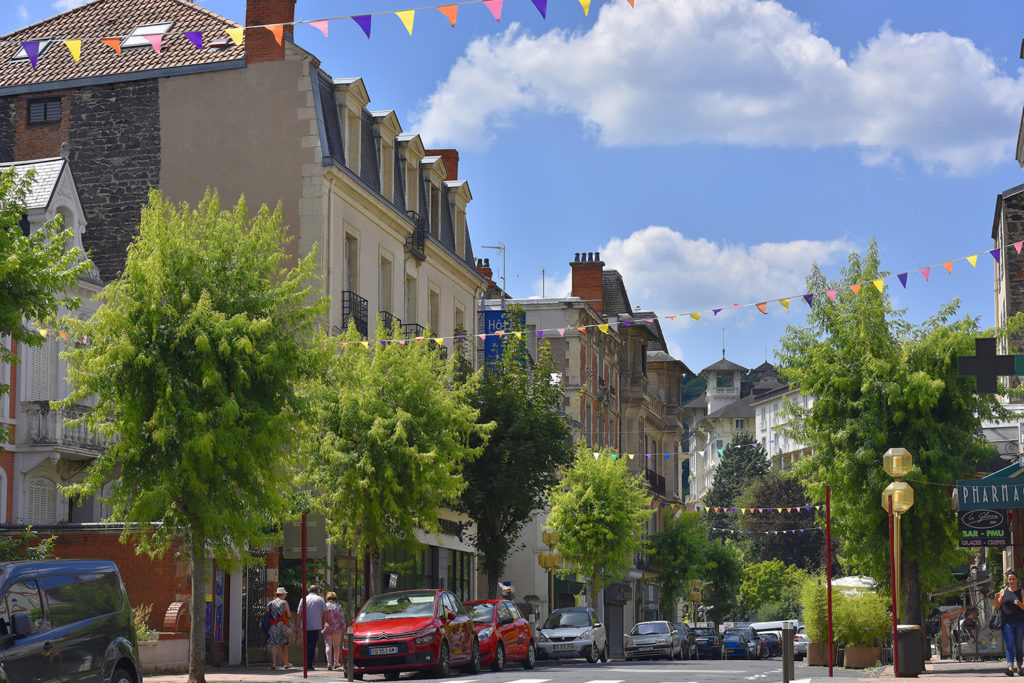
Street ©Henri Derus Photographie 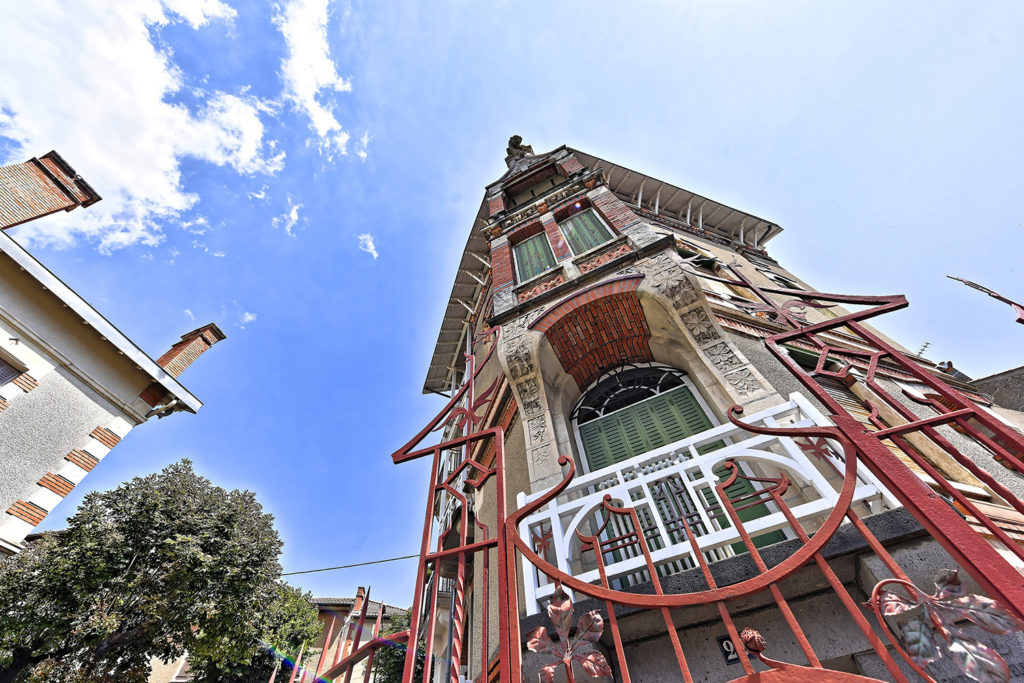
Les Jeannettes’ villa ©Henri Derus Photographie
THE CHURCH OF SAINTE-ANNE
Built in 1845 on Calvary Hill, this church contains no fewer than 900 m² of stunning frescos painted in 1956 by the Estonian artist Nicolaï Greschny.
During the harsh winter of 1956, Greschny managed to pull off the artistic and technical feat of painting the entire surface area of the church vaults from floor to ceiling without using a model or preparatory sketches. It took the artist only two months to complete the most imposing work in his career.

The Grand Hôtel
This Art Deco luxury hotel on Châtel-Guyon’s main square was the last of four such magnificent buildings to be built in the spa town, in 1930. It stopped operating as a hotel in 1956 and was converted into apartments in 1970, but the dining room has remained unchanged, retaining its original décor. Inside, the five vast picture windows with chamfered corners, typically Art Deco in style, look out onto the main square and across to the Casino, Grands Thermes and Theatre, lending this part of town an undeniable charm.
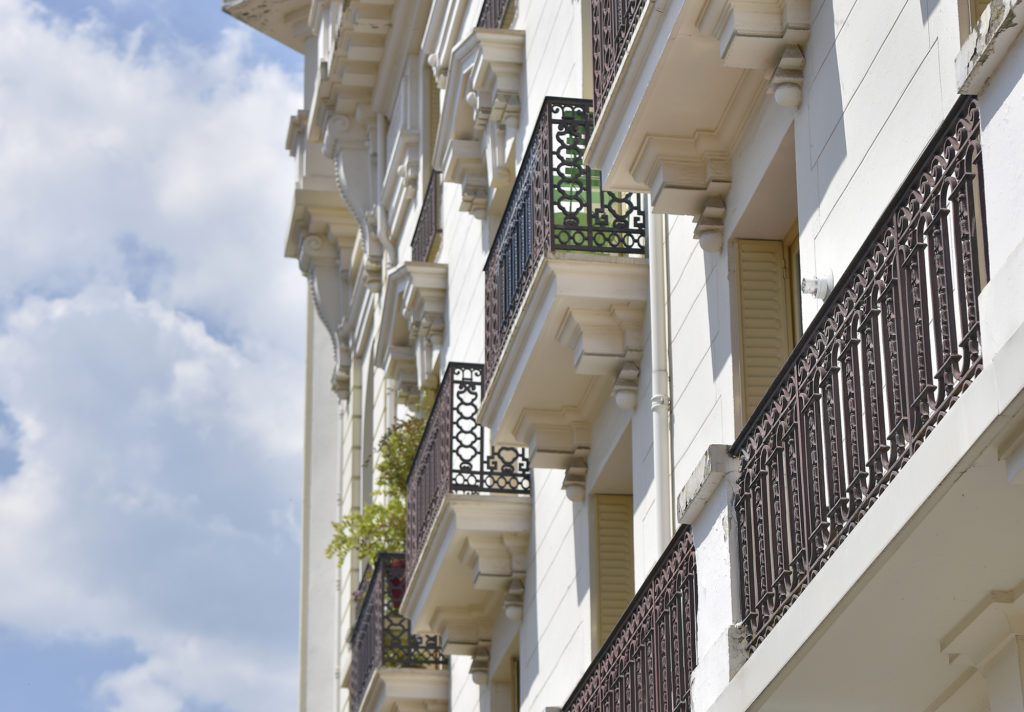
A LIVING, BREATHING TOWN of culture
The theatre
Built on the edge of the town’s Parc Thermal in 1898 by the Parisian architect Albert Le Voisvenel, the Théâtre de Châtel-Guyon opened in 1901. It was extended in 1909 under the sharp eye of renowned architect and interior designer Édouard-Jean Niermans, who boasted an impressive curriculum vitae that included the Folies Bergère, Moulin Rouge, Music Hall Theatre in Olympia and the iconic Hôtel Negresco in Nice. Niermans completely rebuilt the theatre according to the Italian design, also installing a retractable roof, making it the only theatre in France to feature such an innovation.
For more than a century, this cultural hotspot showcased major productions such as L’Ami Fritz, Pomme d’Api and Bagatelle, featuring the biggest stars of the day, and also presenting the operettas that were in vogue at the time. After the war, famous names such as Jacques Brel, Line Renaud and Dalida performed there. The spectacle was however not just on stage, but in the auditorium too, with many celebrities who, having come to take the waters in Châtel-Guyon, also came to the theatre for an evening’s entertainment.
By the mid-1980s, with spa visitor numbers falling, the theatre was running fewer shows, finally closing in 2004 for safety reasons.
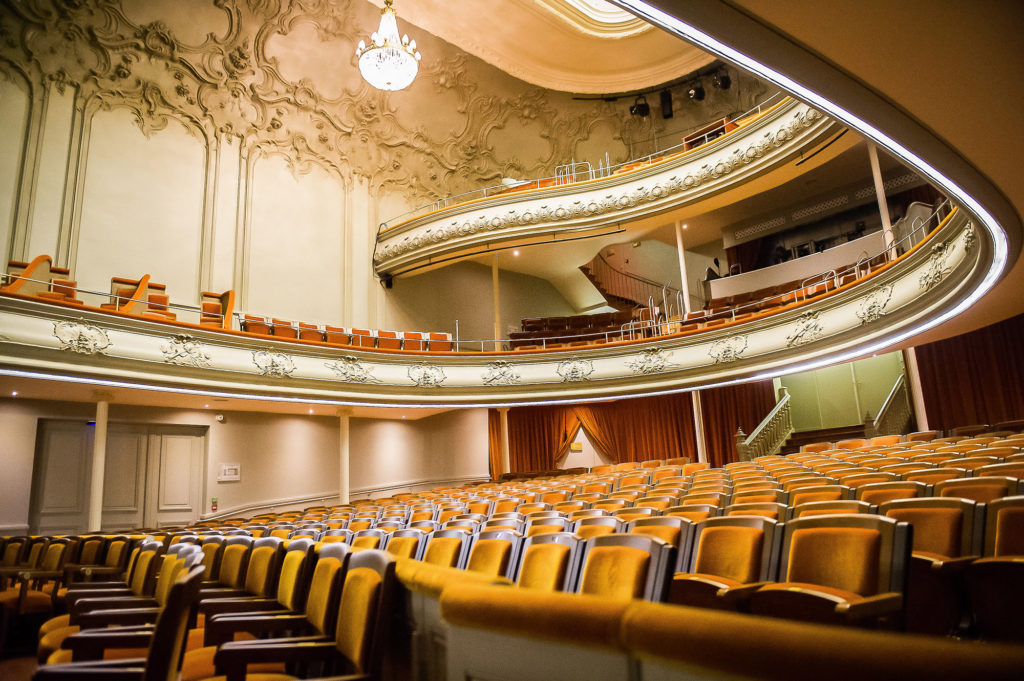
A NEW LEASE OF LIFE
Left in disrepair following its closure, on 22 December 2009 the theatre was bought by Châtel-Guyon Municipal Council, which had decided to give this cultural mecca of historical importance a new start, with the support of residents and a host of sponsors. To this end, the Council launched a vast sponsorship programme with Fondation du Patrimoine, which proved a huge success. Following 18 months of building work, the Theatre reopened its doors in 2015.
Since is reopening, Châtel-Guyon Theatre has presented a varied programme with one aim in mind: to serve as a cultural and recreational focal point for the community. With concerts, plays, circus performances, comedy acts and lectures, today the Theatre offers something for people of all tastes and all ages!
View the theatre’s cultural events programme
LA MOUNIAUDE CULTURAL CENTRE
Châtel-Guyon’s railway station, built between 1910 and 1912 by the architect Marius Toudoire, who also designed the Gare de Lyon in Paris, was the terminus of the Riom-Châtel-Guyon line. This line was officially opened to passengers by the politician Étienne Clémentel in 1912, remaining in service until 1972.
The town station now serves as a Cultural Centre, with four performance venues and an outdoor theatre. A listed building, it also hosts various talks and exhibitions throughout the year. In addition, it is used by many local – mainly cultural – associations and is a licensed wedding venue.

Want to stroll through the Parc Thermal, admire the architecture of Les Grands Thermes, or perhaps take in the latest show at the theatre? Explore the town of Châtel-Guyon on a leisurely walk.



